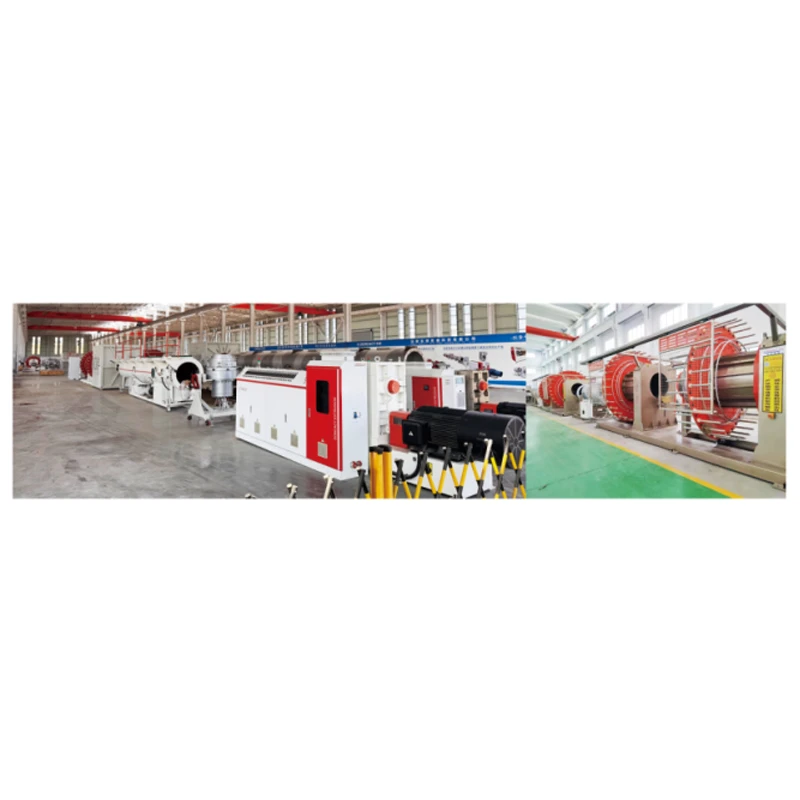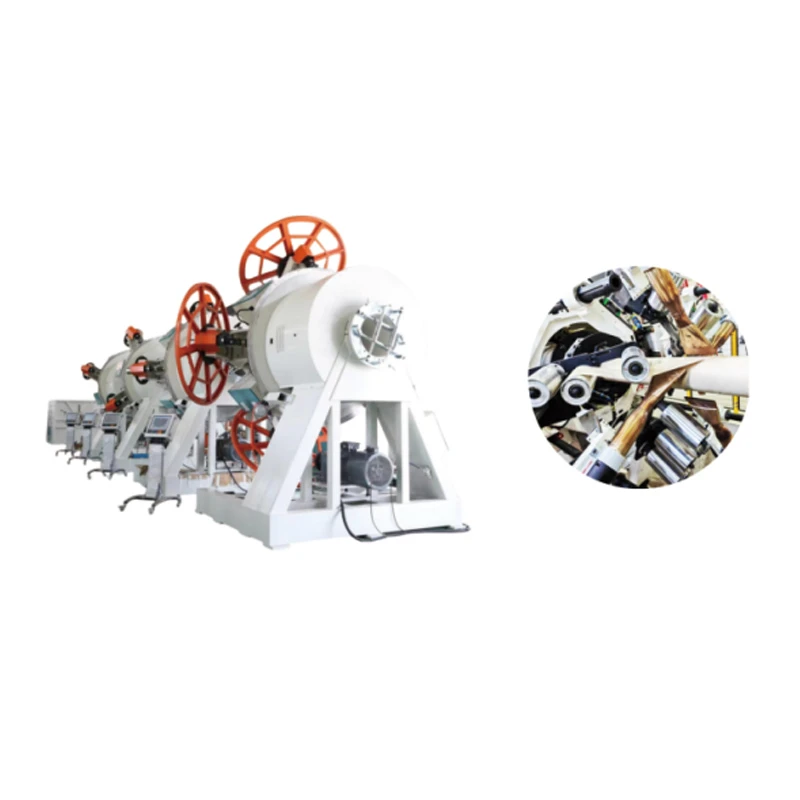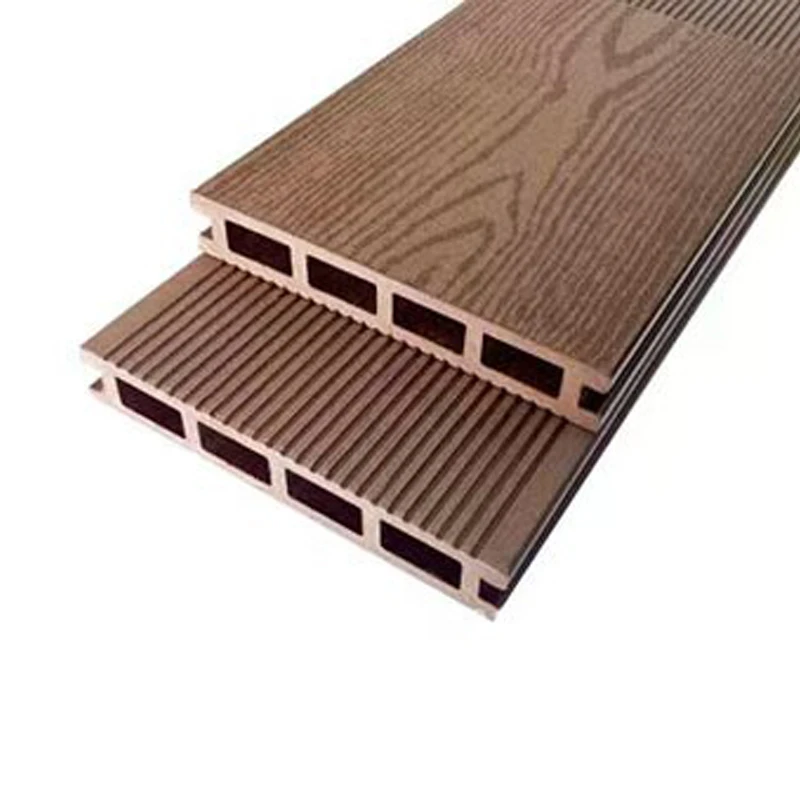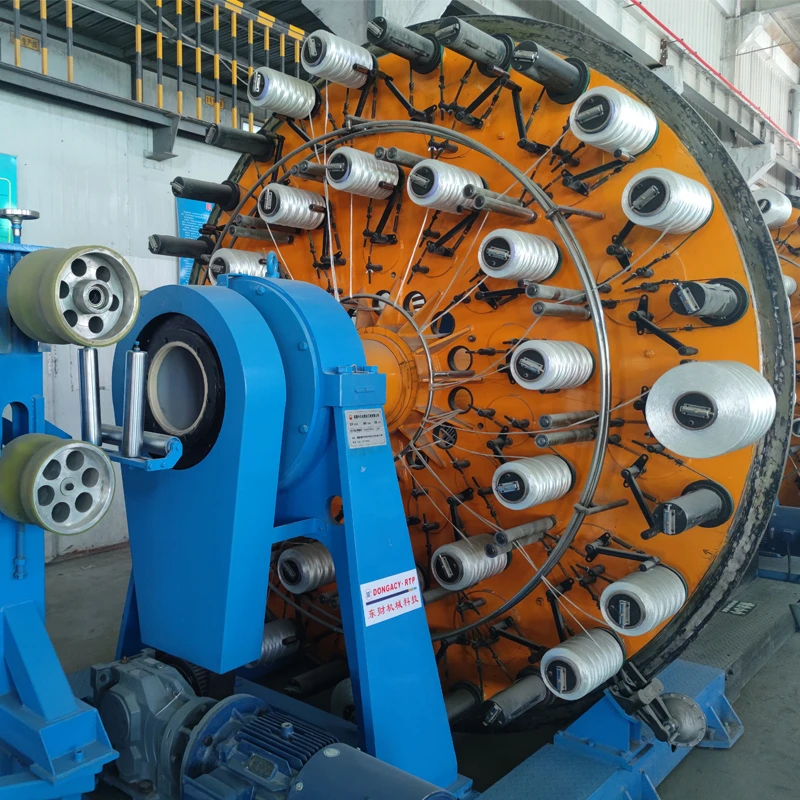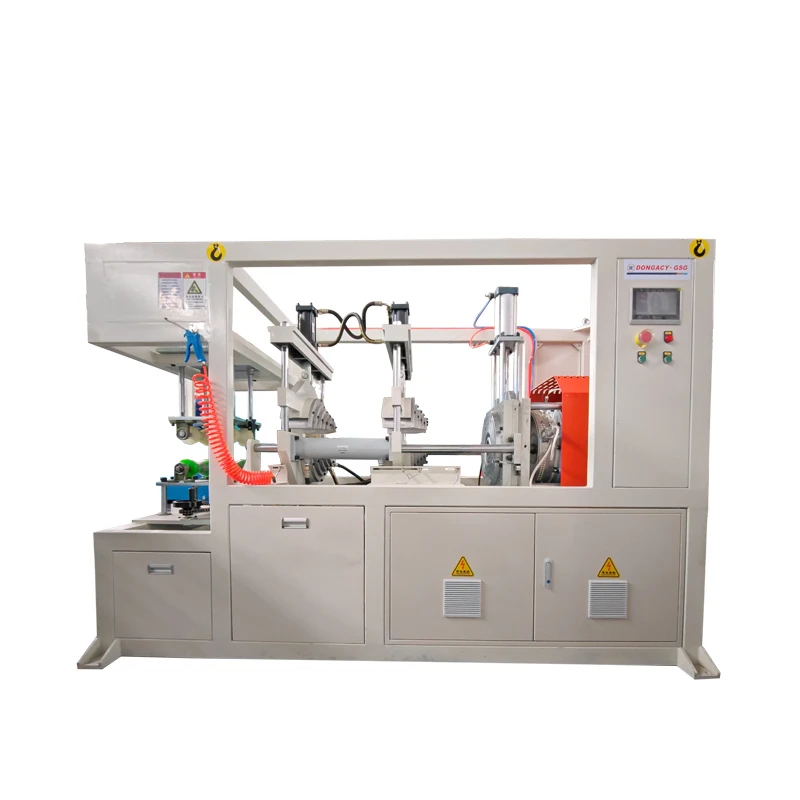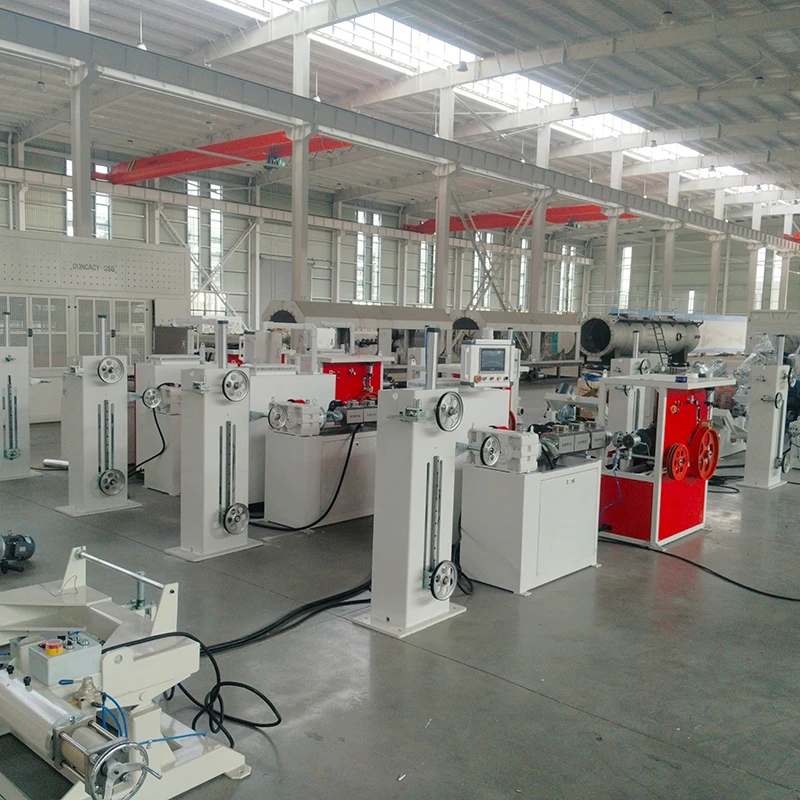
This comprehensive analysis examines the technological advancements, market options, and strategic considerations for industrial extrusion systems. Below is the exploration framework:
- Fundamentals of extrusion mechanics and polymer science
- Performance benchmarks across material types
- Technical differentiation points
- Equipment manufacturer evaluation matrix
- Custom configuration methodology
- Application-specific case evidence
- Strategic selection criteria
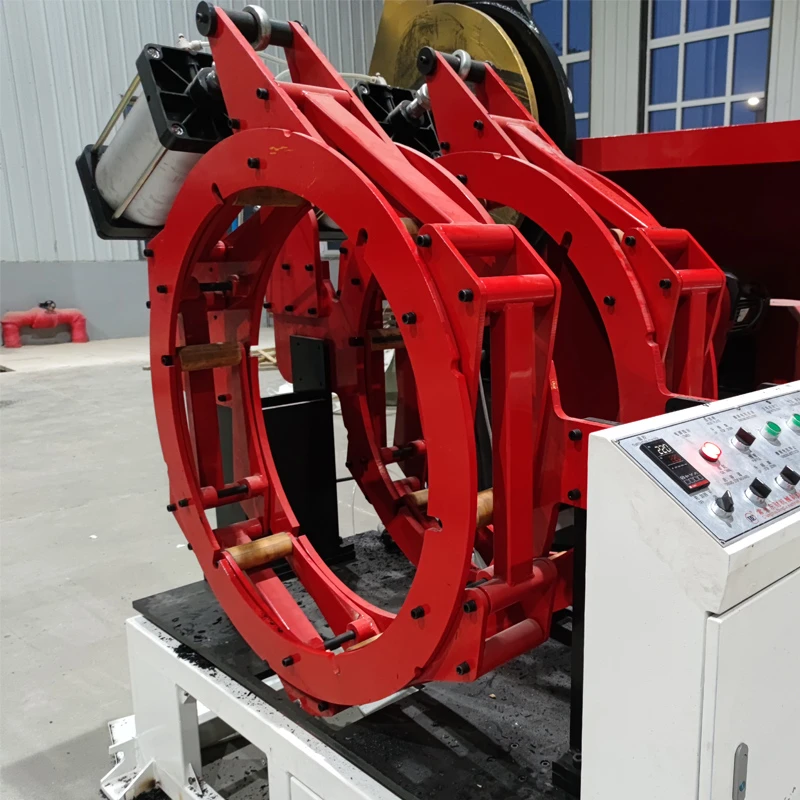
(pipe extruder)
Fundamental Mechanics of Pipe Extruder Technology
Contemporary extrusion systems transform raw polymer compounds into continuous profiles through controlled thermodynamic processes. The primary components include:
- Material feeding systems: Precision gravimetric dosing units ensure exact polymer/additive ratios (±0.5% accuracy)
- Barrel heating zones: 4-7 temperature-controlled segments with ±1°C stability
- Screw configurations:
| Screw Type | L/D Ratio | Compression Zones | Optimal Material |
|---|---|---|---|
| Single-stage | 20:1 | 2 | PP, HDPE |
| Multi-stage | 28:1-33:1 | 3-5 | PVC, RPVC |
| Barrier | 32:1-40:1 | Variable | Engineering resins |
Downstream equipment determines dimensional precision, with vacuum calibration tanks achieving ±0.15mm tolerance on OD measurement for pressure-grade plumbing systems.
Performance Metrics Across Material Formats
Production efficiency varies significantly by polymer chemistry and machine configuration:
| Material | Optimal Melt Temp (°C) | Output Range (kg/h) | Power Consumption (kW/kg) | Tolerance Grade |
|---|---|---|---|---|
| PVC-U | 165-185 | 100-650 | 0.22-0.28 | SDR 9-26 |
| PP-R | 210-230 | 120-800 | 0.18-0.25 | PN 10-25 |
| HDPE | 190-215 | 150-950 | 0.15-0.22 | DR 7.3-21 |
Multi-layer co-extrusion systems demonstrate 18-23% higher output efficiency compared to monolayer configurations when processing composite materials like PVC-O.
Technical Differentiation Points
Leading-edge platforms incorporate multiple proprietary technologies:
- Adaptive control systems: Real-time viscometers adjusting screw RPM ±2% based on melt flow indices
- Energy recovery systems: Capturing 40-65% of barrel heat losses for auxiliary processes
- Nano-coating solutions: Boron-treated screws increasing service life by 14,000 operating hours
Advanced torque monitoring systems prevent material degradation by maintaining constant specific energy input within 0.03-0.12 kW/kg parameters throughout production runs.
Equipment Manufacturer Evaluation Matrix
| Supplier | Max OD (mm) | Output (kg/h) | Efficiency Rating | Automation Level | ROI Period (Months) |
|---|---|---|---|---|---|
| Supplier A | 630 | 320-1100 | 92% | Industry 4.0 | 14-18 |
| Supplier B | 400 | 180-750 | 87% | Semi-auto | 18-24 |
| Supplier C | 800 | 250-1200 | 95% | Modular I4.0 | 12-16 |
Modern platforms from tier-one manufacturers achieve 5.5% average reduction in per-meter production costs through integrated inline measurement systems.
Custom Configuration Methodology
Project-specific engineering optimizations include:
- Dimensional flexibility: Quick-change tooling systems enabling 27-minute format transitions
- Material adaptation kits: Specialized screw elements and barrel liners for filled compounds
- Hybrid control interfaces combining PLC precision with IoT connectivity protocols
Complete PVC pipe production lines typically incorporate five modular components downstream of the extrusion unit, each configurable for specific production requirements.
Industrial Application Case Evidence
- Middle Eastern Infrastructure Project: 45% production increase achieved with tandem extruders manufacturing 1200mm HDPE pressure pipes
- European Plumbing Systems Manufacturer: Reduced changeover time by 67% utilizing servo-electric profile adjustments
- North American Mining Operation: 24/7 production of abrasion-resistant PVC slurry conduits using reinforced barrel technology
Operational data reveals 25-40% scrap reduction in facilities implementing closed-loop diameter control compared to conventional systems.
Selecting Your Optimal PVC Pipe Extruder Machine
Strategic evaluation should prioritize these technical and financial parameters:
| Parameter | Minimum Standard | Recommended | Premium |
|---|---|---|---|
| Screw Torque (Nm/cm³) | 7.5 | 9.2 | 12+ |
| Control Resolution | ±2°C | ±0.8°C | ±0.3°C |
| Energy Recovery | None | 30% | ≥60% |
Implementing modernized pipe extruder
s typically increases production capacity by 25-50% while simultaneously reducing conversion costs per meter by 12-18% based on industry benchmarks.
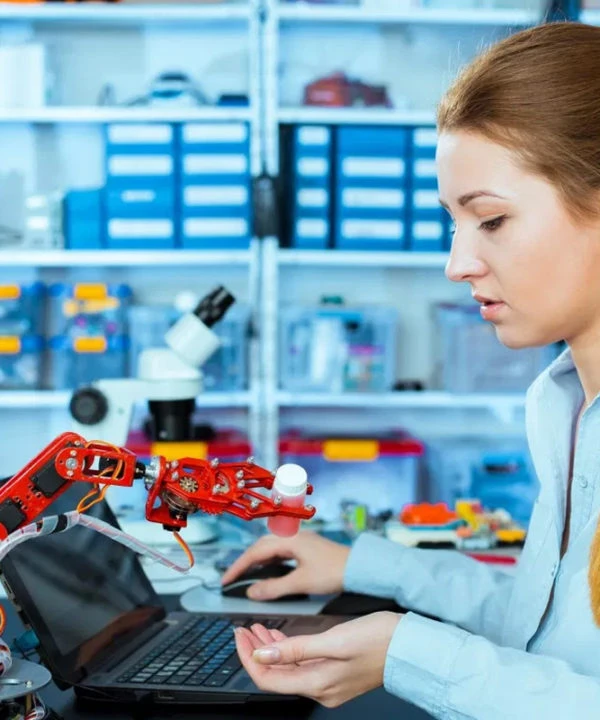
(pipe extruder)
FAQS on pipe extruder
Q: What is a plastic pipe extruder?
A: A plastic pipe extruder is a machine that melts thermoplastic materials and shapes them into continuous pipes or tubes. It works by pushing molten material through a specialized die to create consistent pipe dimensions. Common applications include producing water supply pipes, drainage systems, and industrial conduits.
Q: How does a PVC pipe extruder work?
A: A PVC pipe extruder melts PVC resin compounds using heated barrels and rotating screws. The molten PVC is forced through a pipe-shaped die, then cooled in vacuum tanks to solidify the profile. This continuous process allows high-speed production of pipes in precise diameters and wall thicknesses.
Q: What differences exist between PP, PPR, PE and PVC extruders?
A: The core difference lies in material-specific temperature control and screw design due to varying melting points: PE/PP require 200°C-280°C while PVC needs 160°C-210°C with tighter heat control. PPR extruders add extra cooling zones for the material's higher crystallinity, and PVC models feature corrosion-resistant barrels for chlorine processing.
Q: What are key maintenance steps for a pipe extruder machine?
A: Regularly clean screws and barrels after production runs to prevent material degradation buildup. Monitor and calibrate temperature sensors weekly to maintain melting consistency. Annually replace wear parts like screw tips and barrel liners to prevent diameter deviations in pipes.
Q: Why choose a dedicated PP/PPR pipe extruder?
A: Dedicated PP/PPR extruders optimize polypropylene's high melting viscosity with specially designed compression screws. They ensure smooth material flow to prevent bubbles or wall-thickness variations common in non-specialized machines. This guarantees pressure-resistant pipes suitable for hot-water plumbing applications.
-
Innovative Solutions in PVC Pipe Production LineNewsJul.18,2025
-
Innovative Solutions in Pipe Extrusion Production LineNewsJul.18,2025
-
Advanced Plastic Profile Extrusion SolutionsNewsJul.18,2025
-
PVC Profiles: The Future of Durable and Cost-Effective Construction SolutionsNewsJun.06,2025
-
PVC Pipe Extrusion LineNewsJun.06,2025
-
High-Quality Polyethylene Pipe Production LineNewsJun.06,2025
-
High-Performance Tube Production LineNewsJun.06,2025

